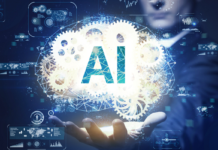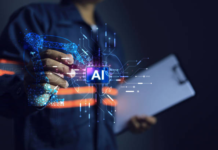
Artificial Intelligence (AI) adoption has doubled in organizations since 2017. Currently, many organizations are investing heavily in AI Applications to scale their businesses in the competitive market. Reports indicate that AI capabilities have also doubled from 2018 to 2022, primarily for robotic process automation and computer vision. In addition, the current trend suggests that natural-language text will become one of the most used AI capabilities in the coming years. Organizations mostly use AI to optimize service operations and create new AI-based products, followed by customer service analytics and segmentations.
Industries Leading The Adoption Of AI Applications
Previously, the manufacturing and the risk sector saw the most significant value of AI use. However, this has changed in the past few years. AI is now actively used in marketing and sales, followed by product and service development. Therefore, the potential value from AI is highest for supply chain management and manufacturing, followed by marketing and sales.
In the past year, technology-centric industries led the AI adoption in business for product and service development and service operations. Secondly, healthcare systems adopt AI for service operations and risk management. However, now, the retail industry is one of the highest adopters of AI. It primarily uses AI to bring efficiency to the marketing and sales process.
Industries Which Are Most Affected By AI Adoption
Information technology, electronics, and the telecommunication sector are most affected by AI adoption. The same is visible from the rising popularity of generative AI models, 3D visuals and software simulation. For example, if a user asks a generative AI model tool to help them know their IP address, the model will promptly offer solutions such as What Is My IP and more. In the telecommunication sector, AI models are used to identify recurring customer queries with proper answers.
Pharmaceutical companies are using AI for relationship exploration between different medical treatments, which can help them to discover new drugs. In addition, AI in aerospace and defense helps design new products and aids in security and mitigation processes.
Other industries that witnessed AI’s power are financial services, education, aviation, logistics, agriculture and automotive.
Use Cases Of AI Applications
With the combined help of computer vision and machine learning (ML), industries are generating 3-D models, which help them with product development. This trend is evident in the technology, manufacturing and retail sector. The application of AI in it results in a decrease in cost and higher efficiency.
On the other hand, ML and deep reinforcement learning are helping industries improve productivity while decreasing service operation costs through the prioritization of dynamically changing tasks. Likewise, the transportation sector uses AI to create multi-modal sensors, which helps them utilize different sensor inputs for performing functions like vehicle sensing for autonomous driving.
The Benefits And Challenges Of AI Adoption
AI adoption in organizations helps them cut costs by automating various tasks. Also, many organizations reported that they saw an overall increase in their revenue after AI adoption. Moreover, new use cases of AI have the potential to expand business capabilities and bring in new opportunities both in acceleration and automation. Other benefits of AI adoption include predictive maintenance, optimization of different processes, sales and demand forecasting and more.
With the benefits of AI adoption, risks and uncertainties are also linked with it. For instance, AI adoption requires a high investment in resources and talent. Only a few know how AI functions, which requires rigid training to upskill the workers. Secondly, there is always an element of cybersecurity and privacy concerns linked with AI. In addition, there are AI-related ethical issues too.
Even though AI adoption is increasing, organizations are not investing in mitigating its associated risks. The common risks associated with AI applications in organizations are cybersecurity, regulatory compliance, individual privacy, explainability and organizational reputation. Organizations can only reap the maximum benefits associated with AI adoption when they are prepared to mitigate the associated risks.
Which Organizations See The Most Return From AI Adoptions?
Organizations with a good road map prioritizing AI initiatives with business value will likely gain the most return from AI adoption. Also, the AI strategy should align with the business’s corporate strategy. Furthermore, the firms that quickly integrate data into AI models reap the most benefit from AI adoptions. Lastly, these companies regularly refresh their AI models based on changing requirements.



















